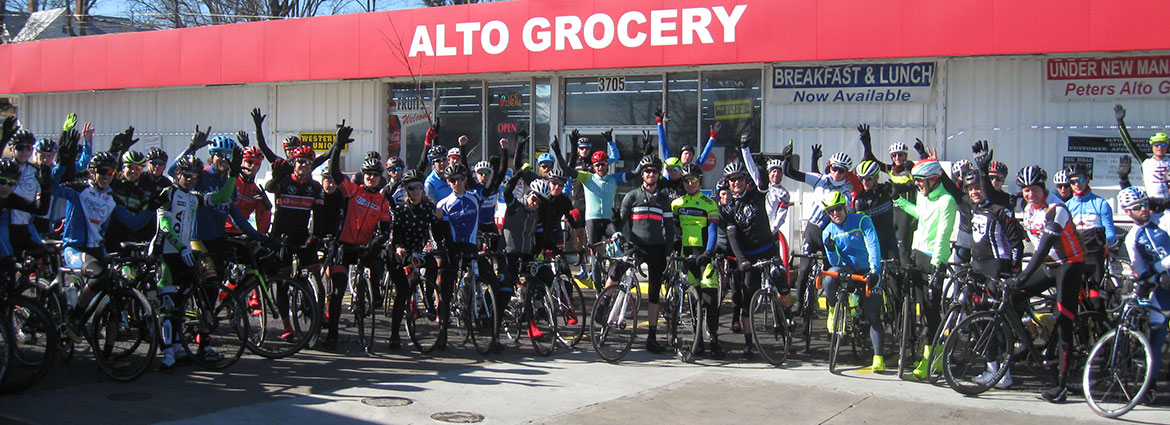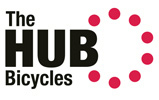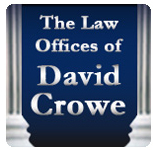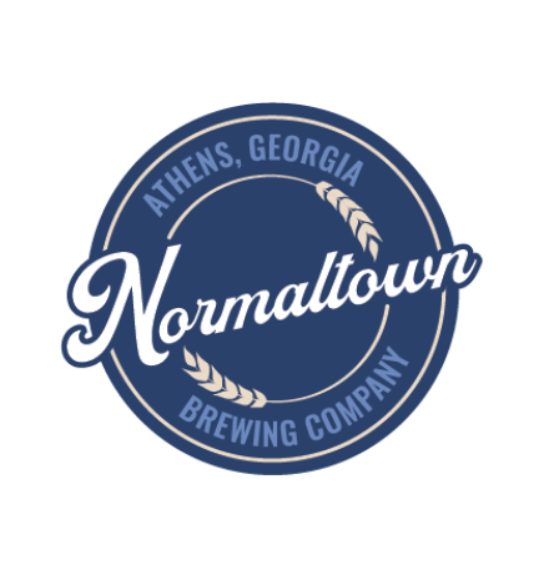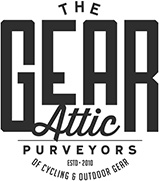WBL, The Origin Story
WBL, THE ORIGIN STORY
Trying to determine the exact year the Winter Bike League began is like trying to pinpoint the precise age of the universe—the best we can do is estimate by measuring cosmic microwaves; after all, there are no written records from either period. But writing did spring into existence in the WBL in 1998, about 5 years after something started, when some humble chronicler sensed these weekly winter adventures transcended the normal training ride and the names of the winners should be preserved for posterity. This written record may have sprung into existence also partly because of this same humble chronicler’s fetish for making lists, but either way, the winner of every WBL ride dating back to 1998 is permanently listed in the “History and Records” link on the WBL website, as well as a tally of the total number of wins. It’s an esteemed list and to score a WBL win is no easy task as evidenced by a quick scan of the winners’ names—through 2020 there has been 77 different riders who have won a total of 191 rides. Farmer Thomas Brown and Big Frank Travieso are the current record holders (2020), each with 17 wins, while the Kid John Murphy sits in 3rd like a fat Pasha with a tally of 13.
The galaxy that would become the Winter Bike League first began to swirl in the early 1990s when several exceptional cyclists rolled into Athens, albeit by different routes. These early arrivers didn’t come into the Classic City at one time but came over the next decade, and many would go on to have stellar professional careers and leave a permanent mark in the history of Athens cycling. Paul King rolled into grad school at U.G.A. from Madison, Wisconsin. Paul would go on to become Collegiate World Champion among only one of his bucketload of achievements. Steve Sevener, an 18-year-old, long-haired farm boy also from Wisconsin, sauntered into town. Steve would go on to become one of the best sprinters in the U.S. and would win over 200 races in his professional career. A blonde-haired, skinny kid from Buford named Chris Pic also joined the mix. Chris was multitalented on the bike and would have a tremendous professional career, a puncheur who raced with some of the strongest U.S. teams at the time. Bill Oyster arrived from Florida as a fresh-faced, 18-year-old freshman at the University of Georgia. Bill honed his skills in Athens and would go on to win the Individual Overall Title in the SEC Championships before turning professional and becoming one of the best road racers in the country. Erik Lemaire and Canada Dave Irving arrived from north of the border. Both had ridden on the Canadian National Mountain Bike Team and were now also racing on the road. Lemaire would go onto become one the best criterium racers in the U.S. while Irving continued to be a dominant force in the southeast on the mountain bike as well as a formidable foe on the road. A boyish kid named Nat Dunn was around in the early days, and he’s still kicking up dust today in 2020. In the interim, Natty has had a stellar road career, but now incorporates gravel, fat tires and dirt into his curriculum, in addition to continuing his WBL adventures. And there was a newly minted local lawyer named Crowe who was pedaling around town at the time. At the time, no one was familiar with this complex network of roads surrounding Athens, but Crowe seemed to have a better handle on them than most, so by default he selected the routes. Most in this early group would go on to form the nucleus of the Athens Bandag Racing Team, whose exploits both on and off the bike will be a separate story at some other time.
This group along with a few others started meeting in downtown Athens at Sunshine Cycles on Washington Street every Saturday and Sunday mornings in the winter and hammering out training rides of five to six hours. There was no GPS at the time so Crowe would pore over a large atlas of all the Georgia counties and trace routes and roads to faraway places with a yellow highlighter and a red pen. The atlas did not differentiate between paved roads and dirt roads so many times the group unexpectedly hit a section of dirt and gravel never ridden before, not knowing exactly when or where it would end. Crowe wrote the directions on a slip of paper which he kept in his jersey pocket, a practice he sometimes still employs. This method wasn’t fool proof, especially if the paper became wet or too crumpled to read, and the group routinely went off course. But Crowe learned to never let on he was lost, and to lie if asked, and most times the tactic worked as the pack would eventually pop out onto a vaguely familiar road with none the wiser. But the WBL was still a work in progress and in the early days there was never any advance notice of where the ride was headed, no warning of how long or far it was, and no telling when one might get home. Some of the stories of rides going far afield and totaling 6 hours ride time (or more) instead of the expected 3 or 4 are legendary. In fact, the start time of the ride used to be 11 AM but was moved an hour earlier too prevent darkness from descending before the group reached home.
This early group explored distant regions in all directions, pushing into remote corners not visited by many others at the time, on or off the bike. The rides began to attract attention in the Atlanta area and elsewhere solely by word of mouth, not only because these were exceptional training rides attended by a small but strong knot of about 12 to 20 riders, but also because these rides were epic adventures. Tina Pic, Clay Parks, Drewdini Johnston, Tommy Mulkey, Jeff Shirey, Erin Winter, Phil Southerland, Jon Atkins, Frank Crumley, Reid Peacock, David Martin, Robert Rivers, Jesse Lawler, Jeff Lee, David Allen, Tom van Devender, Micah Rice, Michael Melnik, Star Bridges, Cesar Grajales, Steve Broglio, Kurt Garin, Greg Somerville and the wily Robert Cox (better known as Conan) were a few other names who started joining the party in the years following 1998, the year writing began in the WBL. This group wasn’t riding the same route week in and week out, these rides were a variety show, going south one week and north the next, then east, then west, looking for hidden byways, secret cut-throughs, the majestic rural route, getting lost often, but having an adventure always. The WBL offered an epic journey each week into unchartered terrain with a few like-minded souls, and this set it apart from other weekly rides that typically rode the same route week in and week out. And once folks finished a WBL ride, it was an exhilarating experience, as it still is today, routinely transcending the ordinary.
Though this early group was young, other than Crowe who was already pushing 30, they were experienced, and were led by strong riders who knew the key to survival on a 5-hour ride was to measure out speed and tempo in steady doses. The pack drovers set a tempo in the first mile they could hold to the last, a constant speed that avoided rapid accelerations or quick slow-downs, and this style of riding eventually became de rigeur in the WBL, the basic building block on which all rides are built. That’s not to say the rides weren’t hard and the speeds not fast, only that they were steady, at least that was the goal, as it remains today. There’s no better way to learn how to ride and how to train than to sit on the wheel of an experienced pro who is cruising in the big ring at a steady but brisk tempo on a long distance trek, and there’s one person who is largely responsible for bringing this style of riding to Athens and stamping it into the consciousness of the local cycling community, Paul King. King was both feared and revered for his ability to pull. He could and would go the front and pull for mile after country mile, but always at a steady tempo. We’d never experienced anything like it, the power he could produce was off the charts—he could pull forever and keep pulling, and he enjoyed it, loved it even, especially when he was dismantling those behind. But slowly and torturously he taught us not only how to pull, but to love it, a life lesson the WBL still tries to instill in its constituents, not through words, but actions: Fortune favors those who pull.
These two “ideas” associated with the early days—a sense of adventure on a long ride led by an experienced group of strong cyclists—are more than likely the two dominant reasons the WBL quickly acquired a reputation in the cycling world as a solid training ride with its own unique flavor. Of course, undergirding the sense of adventure is the fact Athens is surrounded by woods, farmland and rural communities, and we have an endless variety of roads and routes to choose from. As the WBL entered the mid-2000s, it grew exponentially when it joined the world wide web, which was a direct result of the IT genius of Canada Dave Irving, and rides began to attract over 100 riders. Over the 23 years of the WBL’s official existence, sometimes there are over 100 riders in attendance, once even over 200, and sometimes the group may be as small as 30 to 40, but dozens and dozens of riders have passed through Athens and have been, and always will be, a part of the WBL. John Murphy, Jered Gruber, Frank Travieso, Thomas Brown, Joey Rosskopf, Ty Magner, Don Giannini, Brendan Cornett, Todd Henriksen, Michael Trivette, Andy Scarano, Tim Henry, Oscar Clark, Ian Garrison, Brent Bookwalter and Jed Schneider are just a few of the many, many other names, in addition to those already named, who have been at the front of a WBL ride for hundreds and hundreds of miles.
Below are a few facts (or quirks) about the WBL and a short narrative of how each came into existence. We hope to add to these sections in the coming years as different stories are told, different aspects explained, different riders discussed, different issues addressed, and personalized stories told. We hope this origin narrative, like the WBL itself, remains forever a work in progress.
WBL, the name: Canada Dave Irving and Crowe came up with the name Winter Bike League on one of the WBL rides in the late 90s, about the same time some humble chronicler started to record the names of the winners. It was on Nowhere Road after the finishing sprint of another epic ride when the two old compadres found themselves side-by-side, still glowing from the day’s affairs, saying, “We have to come up with a name for whatever this is.” They bandied names back and forth for 3 miles and within 10 minutes decided on Winter Bike League, a.k.a. the WBL. The name stuck. The name has since been copied across the country, and while imitation is the best form of flattery, and while we consider our name—the WBL—part of the cultural commons, our rides, our roads, our good folk, indeed our community, is inimitable, it cannot be reproduced: The WBL is much more than a name.
Sag Car: There was a time when the Sag Car did not exist. In the beginning, the early 90s, when only a dozen or so were riding, it didn’t matter there was no Sag Car, everyone would wait if one person flatted. But when the group swelled to 30, then 40, and then 50, whether the group waited or not was anyone’s guess, and if it was bitter cold and you flatted, better hope you weren’t too far from home because odds were you were on your own. Folks had to be prepared and carry the essentials, to rely on no one else, a life lesson we still try and inculcate in our wee lads and lasses. But again, there were no rules, the WBL was a nascent organization, and things were decided on the fly, and in the early days folks did get dropped and left. Forgive us, but sometimes we slyly grinned, sinfully reveling in the misfortune of others. It soon became apparent we needed a Sag car to follow so the pack could keep moving and not get bogged down because one person needed assistance, and it has been a cornerstone to providing a quality ride. However, on one occasion WBL founding member Chris Pic came back to Athens for a visit several years after he retired and rode a WBL ride and he was shocked to see a Sag Car, he couldn’t get over it, and he chuckled and insisted we had “spoiled the Zealots.” Perhaps he’s right—the WBL has provided a Sag Car for at least 20 years. In the early 2000s when Crowe had 3 small kids, his wife drove a large van that on Friday might be loaded with 8 kids and on Saturday might be stuffed with 8 cyclists along with their bikes—the rear seat was removed each weekend. The Sag Car no longer functions as a taxi service for dropped riders as it did in its youth, but it is here to stay, and it’s been a significant factor in providing a quality ride for all.
Window Open (The 15 Minute Rule): Paul King and Steve Sevener are two names that reappear often in this Origin Story and they are the primary reason for the 15 Minute Rule, a.k.a. Window Open. In the early days, the ride start time was a vague and arbitrary concept and we often found ourselves waiting on either Paul King or Steve Sevener, who sometimes found the 11 AM start a bit too early for their liking after kicking up dust the night before. They usually rolled in about 15 minutes after the ride start time, but there were other times when we were left standing at the alter because they never showed up. Naturally, we cursed them the first few miles of the trek but eventually, out of exasperation, we instituted the 15 Minute Rule: the window is open for 15 minutes, then it slams shut, locked down tight, we’re rolling , catch us if you can! If the window is ever open, you can thank Steve Sevener and Paul King.
Attack Zone: In the early days, the group always sprinted for the Athens City limits sign at the end of the ride, like most group rides, but exactly where a rider could attack was a vague and indeterminate concept. At first, the group waited for the last 200 – 300 meters but eventually the glory of winning became an enticing enterprise and riders began to try and slip away with a few miles to go. But it was always obvious when a person was attacking because the rider would stand and stomp and abruptly jump away and the pack would react and usually the escape was thwarted by the chasing mob. As winning a sprint became more prestigious, riders began attacking further and further out, sometimes 3 to 4 miles or more, but on one occasion, present day Dekalb County SWAT officer and former carrier of the WBL flame, Jason Spruill, whose cheeks were sunken from training this winter, outright lied and claimed he was going up the road to pee. Instead, once he gained a 200-meter gap he gassed it—he was 6 miles from the finish line, the farthest out anyone had ever launched an attack. The group behind eventually recognized the boldly impertinent maneuver and a furious but unsuccessful 6-mile chase ensued that involved about 10 pros at the front rotating—by this time (1998) there were prize boxes and beer was in the box. King, Sevener, Spangenburg, Crowe, Pic, Dave Martin and Tommy Mulkey were all on the rivet and rotating behind, but Spruill was flying and the group behind came up short as Steve Sevener crossed the line 2 meters behind Spruill—it was that close, and drama ensued. Sevener had a Super Bowl party planned later in the day and needed the beer, and he was raging. After a short debate, Spruill was DQ’d* and Sevener took the win and the Attack Zone was birthed, a specific point late in the ride when attacks were allowed, usually 6-9 miles in length. Blowing a whistle seemed like the most efficient way to send out the signal, thus the reason Crowe started wearing a one around his neck. (*After on-the-bike debate, the group determined that had Spruill ridden up the road without comment, his win would have stood, but his lie pulled him into the ditch.)
Da Prize Box: At first, the group simply sprinted for the Athens City limits sign for bragging rights, like most other rides. But the WBL wanted to differentiate itself from the start, and very early in its existence, a card for a free cup of coffee from Jittery Joes was on offer every ride. Usually the card was donated by someone who had filled a punch card for a free cup. Things got real as soon as a prize was on the line, this was all out war, and winning meant one was the toast of the town for the upcoming week, at least in the circles he or she* traveled in. (“She,” when referring to the early years, means either Erin Winter or Tina Pic, two of the baddest ladies to ever stride upon Planet Earth.) As the years passed, participants who owned local businesses began donating other prizes and the winner’s loot swelled. Needing something to carry it in, Crowe grabbed a box to carry the booty, and ever since, every winner of ever WBL ride for 23 years has won a prize box filled with sundry items, an assortment of vices and various types of creature comforts designed to corrupt the winner. In 2001 Big Jon Atkins nabbed one of his two Alto wins and used the phrase “da box” to refer to his bountiful receptacle and the “da” stuck in tribute to Big Jon. The contents of da box vary but it always contains some form of alcohol and some amount of cash. The reason for these two items is that after Jason Spruill won the ride in which he was later DQ’d (mentioned in Attack Zone section), Sevener, initially fearing he’d lost, claimed he hadn’t really chased as hard as he could have and petulantly added, “I only sprint for beer or cash anyway.” From that point forward, da box contained alcohol and cash in deference to Sev. It also eliminated this excuse.
Points system: Since 1998 the WBL has developed a points system that not only rewards winners in 3 separate divisions (Pro, Ladies, Non-Pro), but also awards points to those who take part in the ride—one only need sign in and ride. As a result, riders are rewarded for toeing the line and taking part, and even those riders in the Top 10 Overall are the ones who have not only scored sprint points, but have been present at the rides week in and week out, putting in the miles no matter the conditions. As a result of the WBL’s equitable points system, multiple riders from all three divisions routinely finish in the Top 10, and Erin Winter took the outright Overall Win in 2005, the first lady to do so, while for the Non-Pros, Cleve Blackwell (2007), Greg Sommerville (2006), Star Bridges (2005), Larry Waters (2002) and Jeff Shirey (2001) have all landed on top. Thomas Brown is the current record holder with 6 Overall Wins and Frank Travieso is the only other person who has one more than 1, taking the victories in 2014, 2016 and 2020. Since 1998, there have been a total of 16 different winners over the course of 23 years. In the last 10 years, only Ian Garrison and Oscar Clark have broken Brown’s and Travieso’s stranglehold on the throne. All Overall Winners’ names are permanently listed in the History and Records link on the WBL page.
Zealots: All those who have participated in a WBL ride are known forever as “Zealots.” If that person signed in (and the handwriting was legible), that person’s name is permanently listed on the WBL page under the “Zealots” link. One can never be removed from this list. This list contains a couple thousand names at this point.
Humble Chronicler: As written at the beginning of this narrative, in the early days some humble chronicler sensed some record should be kept of these rides. As time went by this humble chronicler morphed into the Humble Chronicler, some unknown person or persons who regularly attended the rides and posted a narrative about the event. Humble only has a short window to crank out a report and admittedly some of his narratives have missed the mark, but occasionally a phrase, a sentence, a paragraph, or maybe even an entire story, might glow momentarily like a red-hot ember (toot-toot). Humble has experimented with different styles, different voices, different narrative structures, and different topics—Humble doesn’t always stick to what happened on the ride, and at times, veers off at unexpected angles. Humble said in the early days it was boring as hale to write about how fit and strong Sammy Hammer was and it was much more entertaining to tell folks about the midweek bender he went on. Humble thinks one can get at the truth more so with fiction than fact and he compares his WBL writing to reaching into a bucket of wet mud barehanded and scooping out a handful and slinging it against a painted wall—sometimes it sticks and other times it doesn’t, sometimes it looks like mud spattered on a wall, but at other times it happens to form a some semblance of a pattern. Over the years folks have thought they have figured out who the Humble Chronicler is, but his identity remains unknown in 2020 and subject to continued speculation.
Briggs Carney: Briggs took control of the WBL in 2001 in a hostile takeover and he’s been CEO ever since. Briggs doesn’t take part in the WBL rides as he formerly did, but instead focuses his energies on building his brand and spreading the message of the WBL. Expect Carney to be at the helm for at least another 10 to 20 years.
What the WBL is Today: The WBL is still first and foremost, forever and ever amen, a training ride, an opportunity to ride long, steady miles in the wintertime with a group of likeminded friends. But we’ve become more than this. The WBL is a social network, a community, a family of brothers and sisters who share a common passion. Many Zealots become fast friends, and a few have gone on to strike up relationships, marry and even have children after first meeting at a WBL ride (i.e., Jeff Shirey and Erin Winter, both former Overall Winners). Riding 80 miles with another person in tough conditions over difficult terrain at a rapid tempo is hard work, but such trials and tribulation are made bearable by the presence of so many likeminded friends, not to mention the strong bonds created—we’re all part of the same tribe. Though the names have changed over the years, once a Zealot always a Zealot, and in fact, the last 5 to 10 years has seen an influx of new blood who regularly take part in WBL rides: Judah Sencenbaugh and brother Michael, Erik Gruenwedel, Huntley Nash, Jason K Jones, Oliver Quinn, Scott Morris, Sean Philyaw, Charlie Carabello, Cyril Deseveux, Thom Leonard, Tom Fortune, Paul Harkins, Sommers Creed, Cole Rasser, Gatewood Baynes, Thomas Duke, Thomas Gibbons, Dylan Ogle, Frank Pfeiffer, Reece Latham, Julien Ruhe, Tommy Morrison, Elliot Caldwell, Chad Capobianco and Austin Ulich are just a few names who have drank the Kool-Aid and now love to hammer out long rides.
As the WBL has aged, hopefully we’ve grown wiser. Our rides now seek, and have sought for many years, inclusivity. While we still don’t and never will coddle the sniveling masses, our goal is to pass on our love of the bike and the sheer joy we experience from riding it, especially over long distances at a steady clip. We hope to encourage cyclists, to make them work hard but not grind them to powder, and we hope we’ve found a system and a style—a sweet spot—that does just that. But it’s always a work in progress—after all, how many pitchers have ever pitched a perfect game? But every so often, a WBL ride can and does reach across the abyss and touch the sublime.
Long live long rides, long live the WBL!
The Humble Chronicler
(February 2020)
